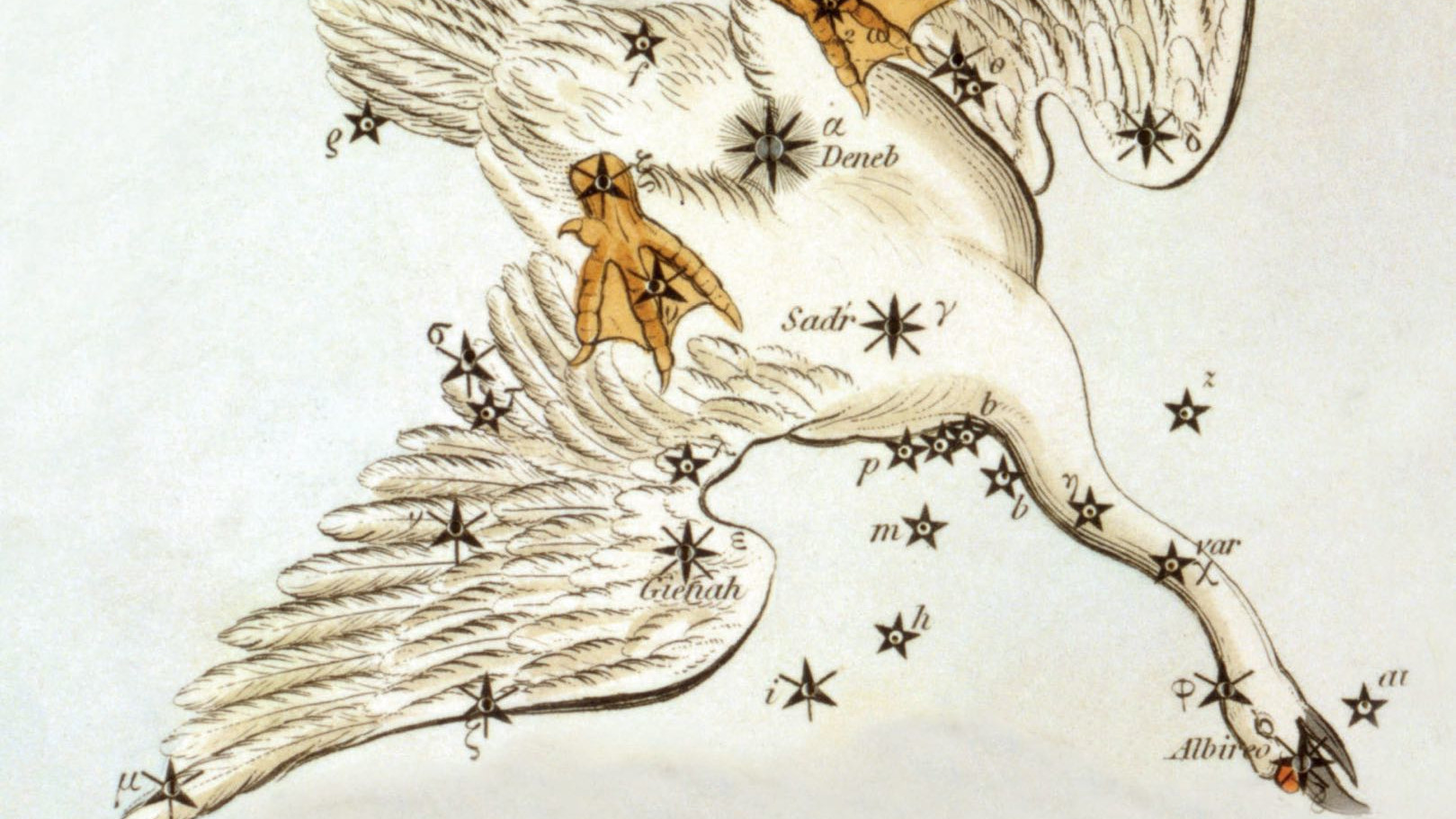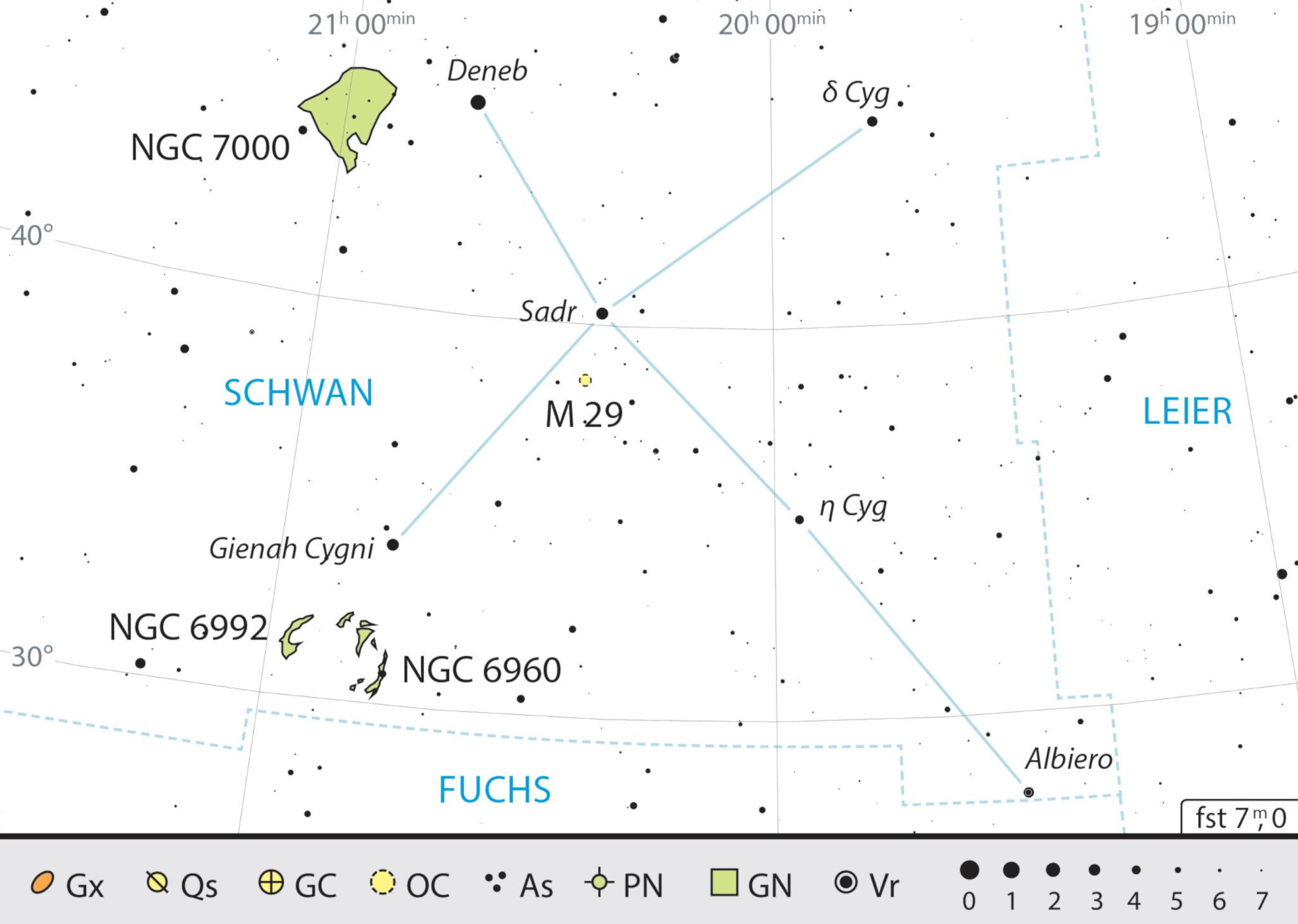Cygnus
The prominent summer constellation includes Albireo, the most beautiful binary star, and large, challenging nebulae.
 The ancient Greeks saw a graceful swan in the distinctive cross-shape in the night sky.
The ancient Greeks saw a graceful swan in the distinctive cross-shape in the night sky.Cygnus is one of the most important summer constellations. While for the vast majority of constellations the eponymous figure is not recognisable at first glance, in this constellation one can immediately imagine a flying swan with outstretched wings. The animal figure is easily visible due to its large cross shape, which is why Cygnus is also known as the Northern Cross - in contrast to the well-known constellation in the southern skies. The vertical axis of the cross represents the elongated body of the swan. Deneb (α Cyg) marks the tail, Sadr (γ Cyg) the breast and at the end of the long neck is Albireo (β Cyg), the star representing the swan’s head. Similarly, on the horizontal axis, bright stars represent the animal’s broad wings.
Father of the gods in the form of a swan
Mythologically, the constellation can be traced back to one of Zeus' many love adventures. The Olympian god turned himself into a swan, seduced the Spartan queen Leda, and had two children with her: Castor and Pollux, who can be found in the constellation of Gemini. Less well known is the story about a son of the sea-god Poseidon. This son was called Cycnus (in Latin Cygnus, meaning swan) after fishermen found the child on a beach surrounded by swans. Cycnus later fought the Greeks in the Trojan War, but was killed in a confrontation with Achilles, whereupon Cycnus was sent to the stars as a swan.
Diverse nebulae
For amateur astronomers, the swan is perfect for discovering many different stages of a star's life, even if you only have a small-aperture telescope. Since the Milky Way runs through this summer constellation it includes, among other things, gas nebulae, star clusters and planetary nebulae. The most well-known birthplace to stars in this constellation is the North America Nebula (NGC 7000), named after its similarity to the shape of the continent of North America. Due to its size of a few degrees, we would recommend that you use a small telescope to view a 3 to 4° field and to use a nebula filter.
Cygnus is also a great location for observing the end of a star’s life cycle. For example, the Cirrus Nebula (NGC 6992/5 and NGC 6960), which is located in the eastern wing, is an impressive example of the remnants of a very high-mass sun that exploded as a massive supernova. A telescope with a large field of view and the use of a nebula filter is also recommended to observe this target. If you are at a dark sky location, a part of the nebula can even be seen with binoculars (see also "Stoyan's Sky" in this series).
 Outline map of the constellation of Cygnus with our observing recommendations. J. Scholten
Outline map of the constellation of Cygnus with our observing recommendations. J. ScholtenAuthor: Nico Schmidt / Licence: Oculum-Verlag GmbH
